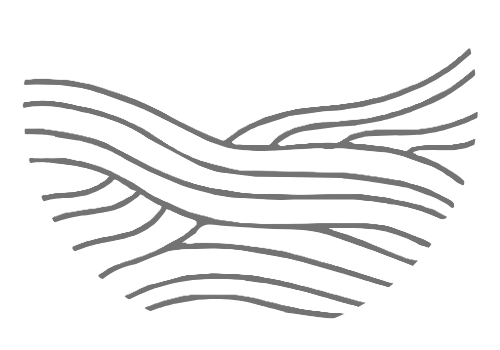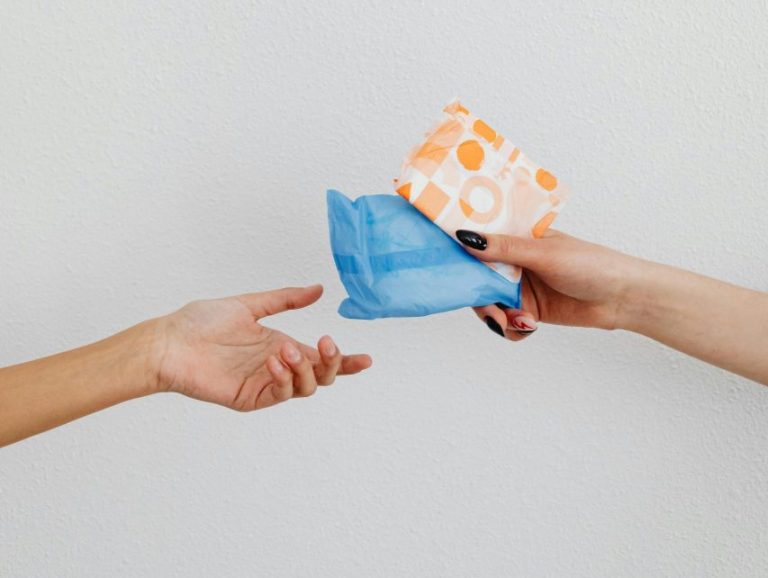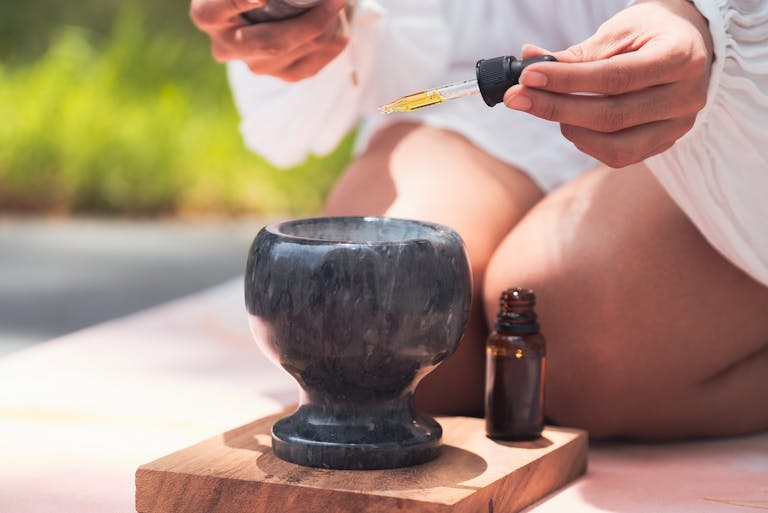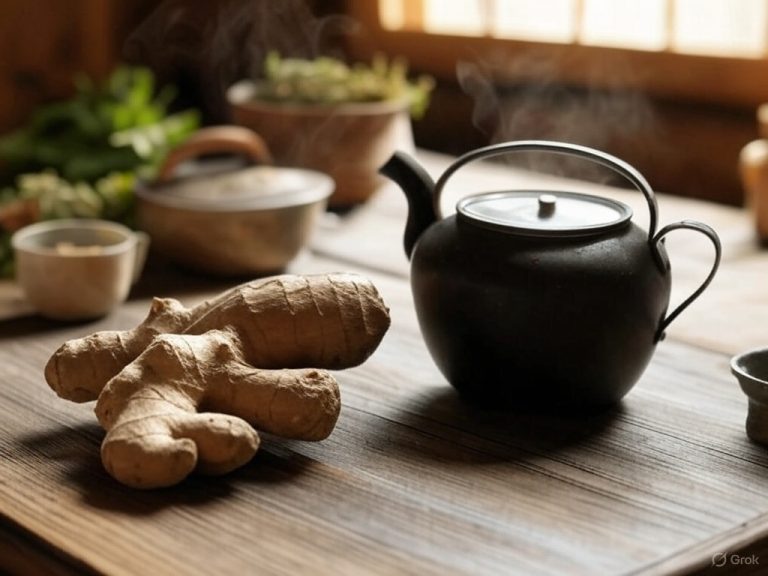I still remember curling up in the fetal position in my bed during my high school years, wondering how I was supposed to make it to school and through the day with cramps that felt like someone was wringing out my insides. If only I’d known then what I know now about the power of herbal teas for period pain! After years of suffering through painful periods with little relief, I’ve finally found natural solutions that actually work.
Did you know that over 80% of women experience menstrual pain at some point in their lives? And yet, so many of us just accept it as our monthly burden to bear. Well, I’m here to tell you that you don’t have to suffer in silence anymore. Nature has provided us with incredible plant allies that can make a world of difference when that time of the month rolls around.
The Science Behind Herbal Teas and Period Pain
Let’s get real for a moment about what’s actually happening in our bodies during period cramps. Those painful sensations aren’t just in your head – they’re caused by your uterus contracting to shed its lining. This process involves inflammatory compounds called prostaglandins, which are like the architects of your pain.
Here’s where herbal teas come in clutch. Many herbs contain natural compounds that directly counteract inflammation and help relax those tense uterine muscles. It’s like sending in a peacekeeping force to calm everything down!
What makes herbal remedies particularly awesome is that they often work through multiple pathways. While over-the-counter pain medications typically block pain signals or reduce inflammation (which is helpful!), herbs can simultaneously reduce inflammation, relax muscles, improve circulation, and even help balance hormones. It’s a more holistic approach to pain management.
Recent research published in the Journal of Alternative and Complementary Medicine found that women who regularly consumed anti-inflammatory herbs experienced significantly less menstrual discomfort compared to control groups. Science is finally catching up to what traditional healers have known for centuries!
Top 8 Herbal Teas for Menstrual Cramp Relief
1. Chamomile Tea: Your Period’s Best Friend
Chamomile isn’t just for bedtime! This gentle powerhouse contains compounds that reduce muscle spasms and inflammation. I discovered chamomile tea during university when a campus nurse finally took pity on my monthly suffering and suggested I try it.
The apigenin in chamomile works as a natural antispasmodic, helping to relax the uterine muscles that are causing all that pain. Plus, its mild sedative effect can help with the sleep disturbances that often accompany period discomfort.
Pro tip: For maximum benefit, brew your chamomile tea covered for at least 10 minutes to extract all those beneficial compounds. Add a touch of honey if you like it sweeter.
2. Ginger Tea: The Anti-Inflammatory Champion
Ginger has been my personal game-changer. This warming root contains gingerols and shogaols that powerfully reduce inflammation and pain. A study in the Journal of Alternative and Complementary Medicine found that ginger was as effective as ibuprofen for relieving menstrual pain – how amazing is that?
The first time I tried fresh ginger tea during my period, I was shocked by how quickly it helped ease my cramping. Plus, it’s fantastic for the nausea that sometimes accompanies periods.
Make it fresh by simmering sliced ginger root in water for about 10 minutes. The stronger the brew, the more powerful the effects!
3. Peppermint Tea: Cooling Relief
When your insides feel like they’re on fire, peppermint tea brings the cooling relief. Peppermint contains menthol, which has natural muscle-relaxing properties that help ease those spasmodic cramps.
Peppermint also helps with the bloating and digestive issues that often come along with your period – it’s truly a multi-tasking herb!
4. Cinnamon Tea: Warming Comfort
Cinnamon does more than make your kitchen smell amazing – it’s also a powerful ally during your period. This warming spice improves circulation and contains compounds that reduce inflammation and fight pain.
Research in the Journal of Traditional and Complementary Medicine found that cinnamon significantly reduced both the intensity and duration of menstrual pain in young women.
I love brewing cinnamon stick tea during the winter months especially – it’s like a warm hug for your insides when you’re feeling crampy and cold.
5. Red Raspberry Leaf Tea: The Uterine Tonic
Red raspberry leaf is known as “the women’s herb” for good reason. It contains fragarine, which helps tone and strengthen the uterine muscles over time, potentially leading to less painful periods.
This is a tea I wish I’d known about as a teenager! While it works best when used regularly throughout your cycle (not just during your period), it can create meaningful change in your monthly experience.
The flavor is mild and pleasant, similar to a light black tea, making it easy to incorporate into your daily routine.
6. Cramp Bark Tea: Nature’s Pain Reliever
With a name like “cramp bark,” you know this herb means business! This powerful herbal remedy has been used for centuries specifically to relieve uterine cramps and muscle tension.
Cramp bark contains valerianic acid and other compounds that relax muscles and reduce spasmodic pain. It’s like nature designed it specifically for period relief!
The taste is quite bitter, so I usually blend it with other herbs like peppermint or add honey to make it more palatable.
7. Fennel Tea: Hormone Helper
Fennel tea has a subtle licorice-like flavor and powerful benefits for period pain. Research suggests it helps balance hormones and has antispasmodic properties that specifically target the smooth muscle of the uterus.
In one study, adolescents who drank fennel tea reported significant decreases in menstrual pain and cramping compared to those who didn’t.
I like to make fennel tea by crushing the seeds slightly before steeping them – this releases more of the beneficial volatile oils.
8. Turmeric Tea: Golden Relief
Turmeric contains curcumin, one of the most powerful natural anti-inflammatory compounds known to science. While we often think of turmeric in cooking, it makes an effective and potent tea for period pain.
I discovered turmeric tea in my early twenties and was amazed by how it helped reduce the intensity of my cramps. It works particularly well when combined with black pepper (which increases curcumin absorption) and a bit of fat like coconut milk.
The earthy, slightly bitter taste isn’t for everyone, but the relief it provides makes it worth acquiring the taste!
How to Prepare Herbal Teas for Maximum Benefit
Getting the most benefit from herbal teas requires a bit more attention than just dunking a tea bag in hot water. Here’s how to maximize their therapeutic potential:
For flower and leaf herbs (chamomile, peppermint, raspberry leaf):
- Use water that’s hot but not boiling (about 190°F)
- Cover your cup while steeping to prevent beneficial volatile oils from escaping
- Steep for 10-15 minutes to extract medicinal compounds
For roots and barks (ginger, cinnamon, cramp bark):
- Use boiling water and simmer for 10-20 minutes in a covered pot
- This decoction method extracts more of the medicinal compounds from these tougher plant parts
For seeds (fennel):
- Crush slightly before brewing to release more beneficial oils
- Use hot but not boiling water and steep covered for 10-15 minutes
Creating blends can enhance effectiveness. Some of my favorite combinations include:
- Ginger + chamomile for inflammation and relaxation
- Peppermint + fennel for cramping with bloating
- Cinnamon + turmeric for warming pain relief
When to Start Drinking Teas for Prevention vs. Relief
Timing is everything when it comes to herbal tea therapy for period pain. Here’s what I’ve learned through years of experimentation:
For prevention, start drinking 1-2 cups of tonic herbs like red raspberry leaf daily, throughout your cycle. This helps strengthen and tone your uterus over time, potentially reducing cramping when your period arrives.
About 3-5 days before your expected period (if you track your cycle), begin incorporating anti-inflammatory herbs like ginger and turmeric. This helps get ahead of the inflammation cascade before it fully kicks in.
For acute relief during painful periods, opt for antispasmodic herbs like cramp bark, chamomile, and peppermint. These work quickly to address active cramping. Drink them as needed, up to 4 cups per day.
The key is consistency. One cup of tea when you’re already in severe pain won’t be a miracle cure – but regular use before and during your period can make a dramatic difference over time.
Enhancing Tea Effectiveness with Complementary Practices
Herbal teas work best as part of a holistic approach to period pain management. Here are some ways to amplify their benefits:
Apply heat to your lower abdomen while sipping your tea. The combination of internal and external warmth can do wonders for relaxing tense muscles. During high school, I used to wrap my travel mug of tea in a scarf and hold it against my lower abdomen between classes!
Try gentle movement like cat-cow stretches, hip circles, or a short walk after drinking your tea. This helps improve circulation to the pelvic area and can enhance the anti-cramping effects.
Practice deep breathing or meditation while drinking your tea. Stress increases pain perception, so taking a few minutes to center yourself can help decrease discomfort.
Consider incorporating magnesium-rich foods into your diet alongside your herbal teas. Magnesium helps relax muscles and can work synergistically with cramp-fighting herbs.
Potential Side Effects and Precautions
While herbal teas are generally safe for most people, they’re still powerful medicine. Here are some important considerations:
If you’re on hormonal birth control or other medications, check with your healthcare provider before using medicinal amounts of herbs, especially those that affect hormones (like red raspberry leaf).
If you’re pregnant or trying to conceive, avoid herbs that stimulate uterine contractions, like sage and thyme in medicinal amounts.
Those with allergies to plants in the daisy family should avoid chamomile.
People with bleeding disorders should use caution with ginger, as it can thin the blood slightly.
Start with one herb at a time to identify what works best for your body and to pinpoint any potential sensitivities.
If your period pain is severe enough to interfere with daily activities, or if you experience very heavy bleeding, please see a healthcare provider. While herbs can help manage normal menstrual discomfort, they shouldn’t replace medical care for conditions like endometriosis or uterine fibroids.
Conclusion
Finding relief from period pain doesn’t have to mean depending solely on over-the-counter medications. Nature has provided us with a remarkable pharmacy of plants that can help ease discomfort and support overall menstrual health.
If I could go back and tell my teenage self curled up on my bed one thing, it would be this: you don’t have to suffer through this every month. There are gentle, effective solutions that can make your periods so much more manageable.
Start by trying one or two of these teas that appeal to you, and pay attention to how your body responds. Remember that herbs often work more subtly than pharmaceuticals, building their effects over time with consistent use.
Have you tried herbal teas for period pain? Which ones have worked best for you? I’d love to hear about your experiences in the comments below!
Today’s Action Steps:
- Choose one herb from this list that addresses your most troublesome period symptom
- Set a reminder to start drinking it 3-5 days before your next expected period
- Track your results and adjust your approach for the following month
Your period doesn’t have to be a monthly ordeal. With these natural allies on your side, you can reclaim comfort and ease during your cycle!
Want to help your daughter have an easier time with her period? I remember the struggles, and I know how helpless it can feel having to suffer through painful periods. That’s why I’m passionate about helping moms and their daughters finding effective, wholesome and natural ways to navigate these symptoms with confidence and care. She doesn’t have to suffer. In my coaching program, I will work with you to create a personalized support plan combining gentle nutrition tips, simple lifestyle adjustments, and natural comfort measures that work.
Let’s make this journey smoother – for both of you. Schedule a discovery session with a coach to explore how we can help your daughter feel more comfortable and confident during her period. My approach focuses on education and practical solutions that fit seamlessly into your family’s lifestyle.







